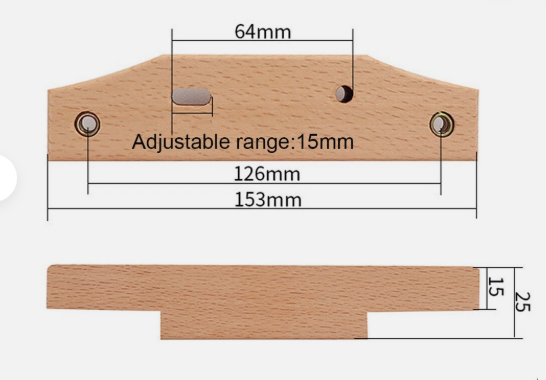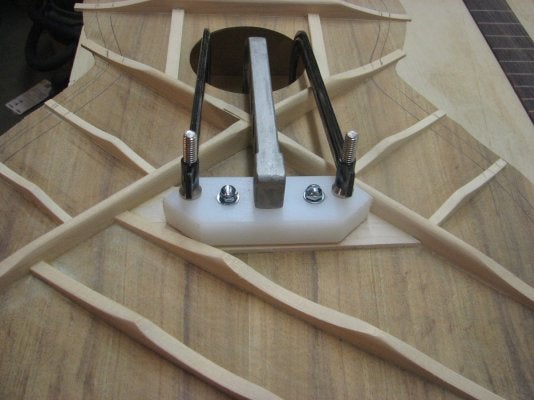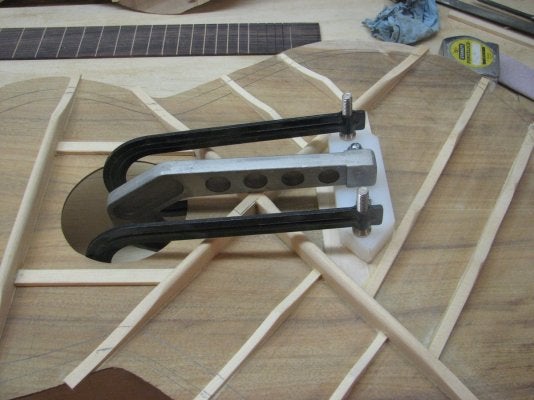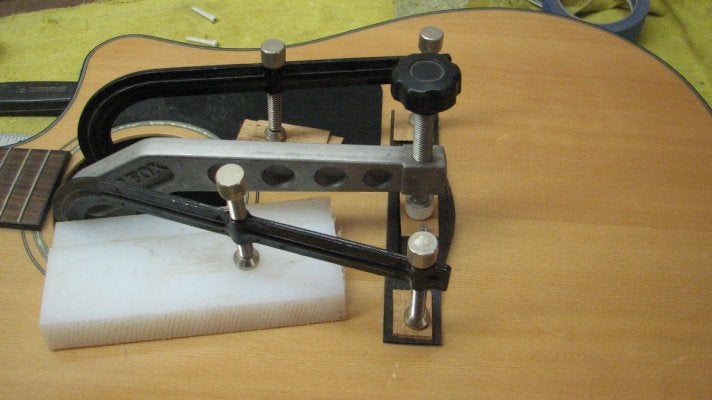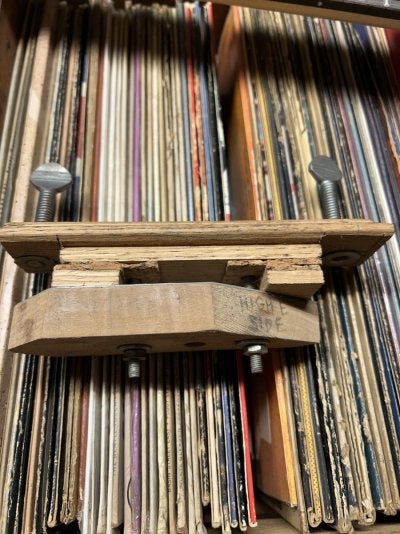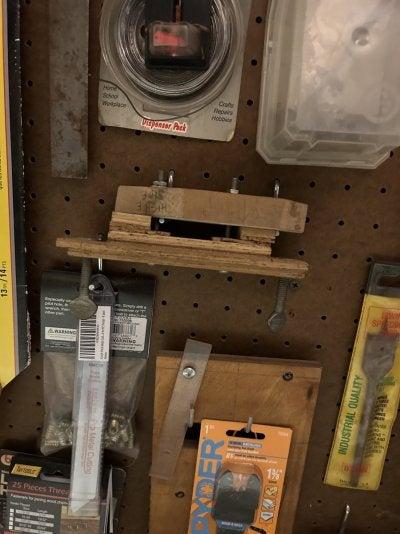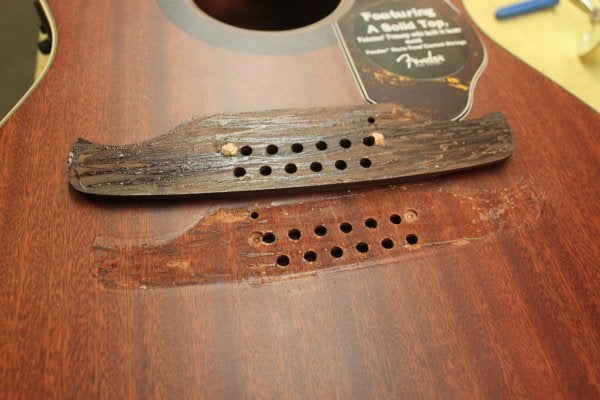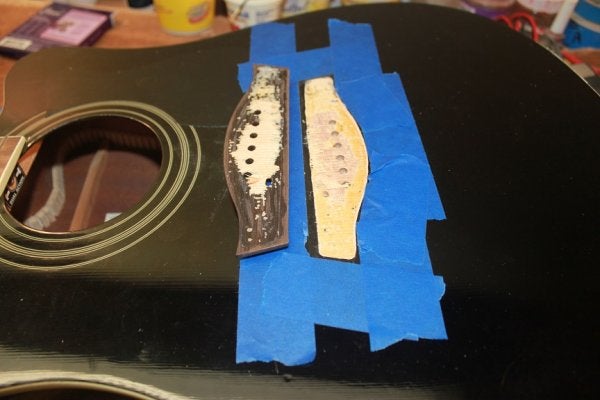RLangham98
Tele-Holic
Has anyone here made their own bridge clamp for a flat top acoustic?
My thought was to take some hardwood 1x1”’s, put pads at both ends, bolt them each to a block of wood at the other end so that they can pivot, then drilling a hole through each about three inches away from the pivot, and using a carriage bolt, wingnut and washers to tighten the whole affair down.
Obviously it would be weaker than a traditional metal cantilever bridge clamp and also operate at a mechanical disadvantage, but I’m having trouble justifying the cost for a guirar that’s probably worth less than the clamp, and I don’t know how often I would use it afterwards. And I like making my own tools, it reminds me of things my dad used to make when he needed a specific tool he didn’t have.
Anyone have experience or a better idea?
My thought was to take some hardwood 1x1”’s, put pads at both ends, bolt them each to a block of wood at the other end so that they can pivot, then drilling a hole through each about three inches away from the pivot, and using a carriage bolt, wingnut and washers to tighten the whole affair down.
Obviously it would be weaker than a traditional metal cantilever bridge clamp and also operate at a mechanical disadvantage, but I’m having trouble justifying the cost for a guirar that’s probably worth less than the clamp, and I don’t know how often I would use it afterwards. And I like making my own tools, it reminds me of things my dad used to make when he needed a specific tool he didn’t have.
Anyone have experience or a better idea?


